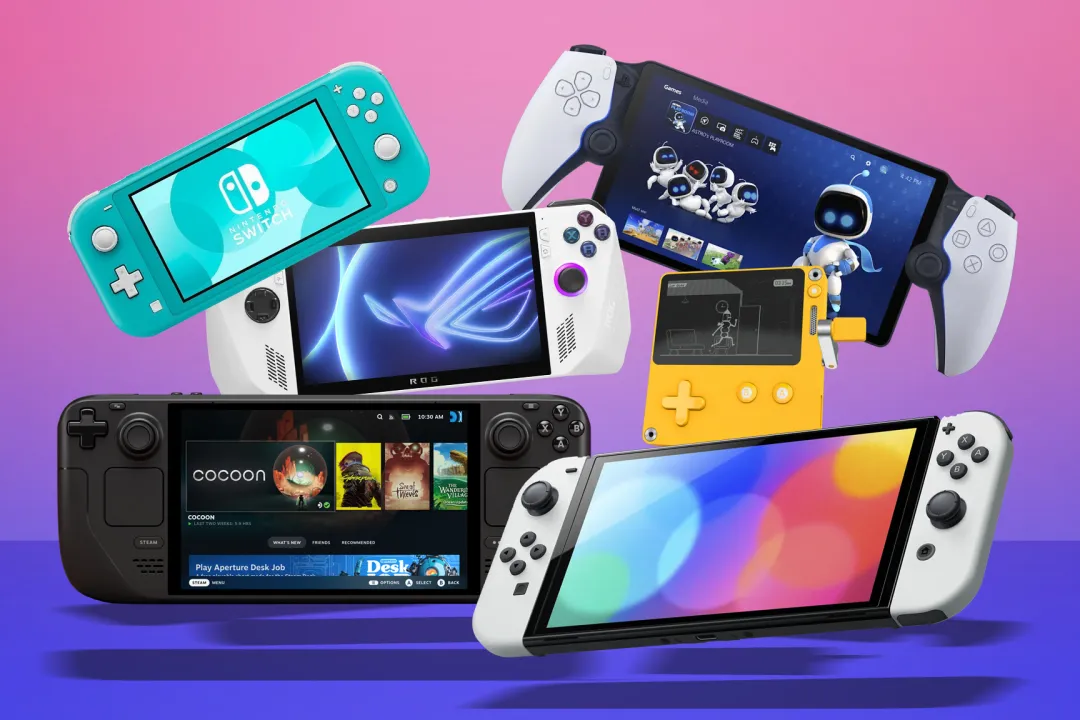The Birth of Portable Gaming: A Digital Revolution
In the early 1980s, handheld gaming emerged as a groundbreaking concept that would forever change how people experienced interactive entertainment. The first true milestone was the Milton Bradley Microvision in 1979, a clunky but revolutionary device that paved the way for portable electronic gaming. However, it was Nintendo’s Game & Watch series, introduced in 1980, that truly captured the public’s imagination. These simple yet innovative devices featured single-game LCD screens with basic electronic designs that became instant collector’s items.
The real game-changer arrived in 1989 with the Nintendo Game Boy. This legendary device wasn’t just a gaming system; it was a cultural phenomenon. Bundled with Tetris, the Game Boy transformed portable gaming from a niche hobby to a global obsession. Its simple design, long battery life, and ability to play interchangeable cartridges made it a must-have for gamers of all ages. The device’s iconic gray body and green-tinted screen became synonymous with portable gaming throughout the 1990s.
As technology advanced, handheld consoles became more sophisticated. The Sega Game Gear and Atari Lynx challenged Nintendo’s dominance with color screens and more powerful hardware, though they struggled to match the Game Boy’s battery efficiency and game library. The late 1990s saw the rise of more advanced systems like the Neo Geo Pocket Color and the Nintendo Game Boy Color, which introduced vibrant graphics and expanded gaming possibilities.
The turn of the millennium brought a new era of handheld gaming. Nintendo’s Game Boy Advance, released in 2001, was a quantum leap forward. With near-console-quality graphics and a landscape-oriented design, it brought more complex gaming experiences to the palm of players’ hands. Sony entered the market with the PlayStation Portable (PSP) in 2004, introducing a multimedia device that could play games, music, and videos, challenging the very definition of a handheld gaming console.
Nintendo continued to innovate with the Nintendo DS in 2004, introducing dual screens and a revolutionary touch interface that transformed handheld gaming interaction. The device became a massive success, appealing to both traditional gamers and a broader audience with innovative games like Brain Age and Nintendogs.
The progression of PSP and Nintendo DS models ultimately gave way to more advanced mobile gaming platforms. Nintendo’s 3DS brought glasses-free 3D graphics, while mobile smartphones began to encroach on the dedicated handheld gaming market. These devices offered increasingly sophisticated gaming experiences, challenging the traditional concept of handheld gaming consoles.
Throughout this evolution, these portable gaming systems represented more than just technological achievements. They were windows to imaginary worlds, companions during long trips, and sources of endless entertainment. Each device told a story of innovation, pushing the boundaries of what was possible in interactive digital entertainment. While other brands experience glimpses of success, Nintendo portable handhelds have consistently dominated while capturing peoples wallets and imagination.
The Modern Retro Gaming Renaissance
As smartphone gaming and advanced portable consoles dominated the market, a passionate community of retro gaming enthusiasts yearned for something more authentic. Enter Anbernic, a Chinese company that has masterfully bridged the gap between nostalgia and modern technology.
Anbernics extensive range of handheld consoles has made them a destination for those seeking to relive the golden age of handheld gaming. Their devices aren’t just emulation machines; they’re finely crafted gaming consoles that transport gamers back to the pixelated worlds of the 80s, 90s, and early 2000s. By creating devices like the 351 and 35xx series, Anbernic has tapped into a deep well of gaming nostalgia.
What sets Anbernic apart is their nuanced understanding of what retro gaming fans truly desire. Their handheld devices come in various form factors – some mimicking the classic horizontal design of the Game Boy Advance, others capturing the vertical layout of the original Game Boy. The RG505, RG405V, and unique RG Cube demonstrate the company’s commitment to diversity and innovation.
More than just hardware, these devices represent a celebration of gaming history. With prices starting from as little as USD$50, Anbernic has made retro gaming accessible to a wide range of enthusiasts.
Powered by affordable yet powerful processors and offering dual-boot capabilities between Linux and Android, these Anbernic handhelds honor the legacy of portable gaming while embracing new and reliable technology.
As major gaming companies continue to push forward with increasingly complex systems, Anbernic and similar manufacturers have carved out a unique niche. They remind us that sometimes, the most compelling gaming experiences aren’t about hyper-realistic graphics or complex mechanics, but about the pure, unadulterated joy of play.
From the simple LCD screens of the 1980s to the advanced emulation devices of today, handheld gaming has transformed how we play, connect, and experience digital worlds. They weren’t just devices; they were portals to imagination, technological marvels that fit perfectly in the palm of your hand.
The handheld gaming journey has come full circle. Portable gaming continues to evolve, always keeping that sense of wonder and portability that made us fall in love with gaming in the first place. Whether through nostalgic recreations or cutting-edge technology, the spirit of handheld gaming remains as vibrant and exciting as ever.

